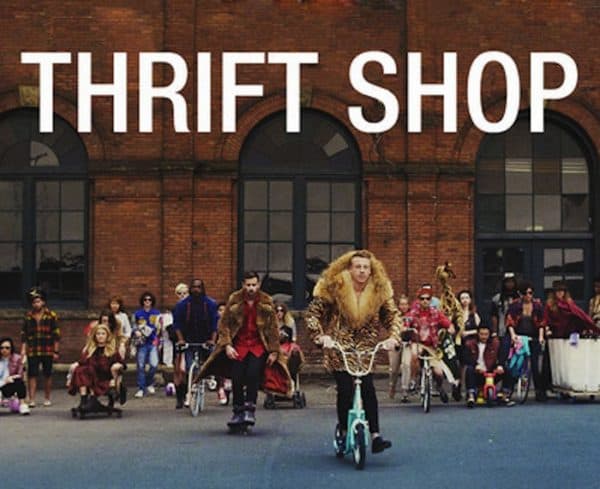

“I call that getting swindled and pimped. I call that getting tricked by a business.”
-Macklemore, “Thrift Shop”
Having switched from an iPhone to the BlackBerry Z10, I recently came across BlackBerry Link, a feature that allows BlackBerry 10 users to sync and access their desktop over Wi-Fi or USB using their BlackBerry 10 device. And yes, if you have a Mac, you are supported too.
Now, one could argue that struggling BlackBerry has no choice to play well with other devices and platforms, but it somehow seems refreshing in this day and age. Why? Because somewhere in the middle of its incredible resurgence Apple began playing its loyal followers for chumps.
Apple devices have most always worked well, and well with each other, and so many decided to simply jump inside Apple’s walled garden. Sure, Apple began to allow Windows to run on Macs years back, but for the most part, the technology simply doesn’t jive with anything else. But who needs anything else, when all my Apple devices sync together, right?
Jon Buys, writing a few years ago in Gigaom, summed up the feelings of those happy inside the walled garden.
“Does Apple’s degree of control occasionally border on the excessive? Yes. But consumers end up benefiting from that control more often than they are harmed. It’s only because Apple controls the entire product line that you can rent Inception in iTunes on your Mac, and know that it will play on your iPad, your iPhone, and your Apple TV. It works reliably, consistently and predictably.”
That was then. This is now. And in this day and age Apple has clearly started down the slippery slope of abusing those who are most loyal to them. Was the culprit the iMaps debacle? The clunky Siri? The ever-worsening bloatware that is iTunes? Nope, it was a few pins. More precisely, it was Apple’s lightning dock. Introduced with the iPhone 5 late last year, Apple’s new dock, said the company, enabled a faster, thinner phone. Many long time Apple users cried foul.
Jason Bird, an Australian Apple fan, voiced what many were thinking.
“I bought the iPhone 5 in the first week it was released and realised that I had all these 30 pin chargers – in my car, my Yamaha alarm clock radio – all these things I was used to charging my phone with or playing music on I realised I couldn’t use any of it,” he told news.com.au’s Claire Porter.
Bird, who is an industrial engineer, set about inventing a solution to the problem. But why didn’t Apple provide a solution that transitioned its loyal user base over?
Ed Conway, addressing Apple management directly in a recent piece for Business Insider, says you need look no further than Apple’s recent record quarters for the answer.
“You’re aware that the more frequently something is out-of-date, the more often we’ll have to buy more Apple stuff. Now, I was willing to put up with that when it felt as if there was genuinely progress between iterations, when there was a shred of aspiration about it, but by the time you unveiled the lightening connector I wasn’t so sure. All it means is that I have to throw out all the devices I’ve bought over the past years which plug into my iPhone: adaptors, radios, speakers and so on. It’s a really low-down thing to do – particularly since the lightening connector is patently not that much faster than the existing dock.”
Conway continued:
“You want to turn yourself into a quasi-service, where we constantly need to buy or subscribe to one of your products. I see the point – it’s economic genius. The problem is that it’s not inspiring in the slightest; and the products are no longer wowing us enough to detract from the venality of it. And I’m just tired and, worse, bored of it.”
Apple’s business proposition depends on people who are willing to pay more for its products. This was not a problem with the the iPod, iPod Touch, and iPhone, because they were so much better, so much simpler and more intuitive than alternatives. But ask yourself, do you see someone using an iPhone 5 and think that person is hip and edgy, a trendsetter? Of course not, you just see someone using one of the more common phones around. And paying double for it.
This is Apple’s problem today; its current products aren’t differentiated enough to deserve a premium, and it has begun to play on the loyalty of its followers with the planned obsolescence of its products, forcing them to trudge back to their local Apple “Genius” for the latest iWhatever.
Increasingly, Apple loyalists seem like the urbanite rubes in Macklemore’s current smash hit “Thrift Shop”, paying $50 for a limited edition t-shirt that six other people in the club are are already wearing.
For Apple, which now tops the list of the world’s most powerful brands, losing the hip factor will have a greater impact than it would for any other consumer electronics company. After all, if your t-shirt doesn’t make you cooler than the thrift store version, why would you pay $50 for it?
Whether its iWatch, iTV, or iGlass, Apple has to constantly find a way to command premium prices. It simply can’t exist in the middle ground -it’s too crowded there.
Comment
One thought on “What Apple can learn from Macklemore’s “Thrift Shop””
Leave a Reply
You must be logged in to post a comment.


 Share
Share Tweet
Tweet Share
Share




bang on!